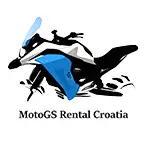Everything you wanted to know about Romania
Everything you wanted to know about Romania
Category: Travel Recommendations
Romania and Transylvania, of myths, witches and bears.
When is the best time to go to Romania?
Well, the best time travelling to Romania and take a tour of these wonderful cities, landscapes, and mountains is August and September. Between May and July, the weather is also good, but it can rain a lot during the day, so it is better to wait until August or September to make the trip.
On the other hand, all interesting and breathtaking mountain passes are open from July. Mountain passes like Transalpina or the legendary Transfăgărășan. It should certainly be clear that such passes may be or are closed over the winter months.
Curiosities of Romania:
Below, you will find different curiosities that Romania has, this being one of the countries belonging to the old European continent which enjoys the best-known legends and interesting facts:
The second largest underground glacier in the world - Scărișoara Glacier Cave. It is located inside a Transylvanian cave called Scărișoara and over the years it has been considered one of the most attractive tourist sites in the entire country.
In ancient times, all the coins that were used in Romania had the name of a lion (leu in Romanian) and this animal was always important in the country's economy, which is why Romanian coins are finally known as leu. A particular fact about Romania is that the banknotes they use are made with plastic, which is cheaper at the time of manufacture and, of course, lasts and is preserved much longer.
The capital of Romania is Bucharest, which means happiness. As well as its importance, this city also has charm and is a great tourist centre, which is why it is also called "Paris of the East". However, this description does not only come from the charm, this description also comes from the triumphal arch (Arcul de Triumf), which resembles that of the French capital.
The great mystery of the Bucegi Mountains in Romania. Although Romania does not enjoy buildings from the Egyptians, you will be able to see some rocks that are like the mythical structures of Egypt, this detail makes Romania something striking and curious, especially when you visit the Bucegi Mountains.
Nadia Comăneci, the Romanian gymnast. It is normal and almost obligatory to hear the name Nadia Comăneci, who was one of the most illustrious women in Romanian history and culture because she achieved the first completely perfect score in the Olympic Games, which was not only meant a sporting milestone but also deserved to be among the best-known names in all of Romania.
Trovant, the stones that grow and reproduce. An interesting fact and to some extent magical are the fact that in Romania there is a great variety of rocks that grow when it rains and this has to do with the fact that its component allows the water to enlarge it, these majestic stones are called Trovant.
Dracula's country. As you know, Romania is known as the country of Dracula, however, although this has become a popular belief, the Bran Castle, which Count Dracula is associated with, was not his residence and he even never visited this castle. So, this story is just a legend. Bram Stoker was inspired by the emperor to represent Count Dracula, who over time was considered an important character in universal literature and history.
What you did not know about the Romanian language? The Romanian language belongs to a language that is quite old before all civilization.
Romanian Communist Dictator Nicolae Ceausescu. In Romania, Ceausescu is known not only as the one who built the largest Civil Administration Building in the world, but he is also known as a terrible dictator.
Timișoara is not only a city belonging to Romania, but it has been one of the most advanced in Europe, as it was the first city that enjoyed electric light in Europe.
Brasov, the city of bears in the heart of Transylvania, since in and around the place there is a large population of wild bears.
Danube Delta is one of the richest and most unknown ecosystems in Europe.
In addition, Romania has an incomparable jewel, namely the Danube Delta, which is the most preserved on the European continent, has about 23 completely natural ecosystems, and has been considered a World Heritage Site by UNESCO.
Very close to the Danube Delta, you will be able to observe the Rock Sculpture of Decebalus, that honours King Decebalus and this was carved as an impressive aspect on a rock about 55 meters high.
Romania is the European country with the best internet connections. For technology lovers, Romania has a particular curiosity and that is that, as one of the most technologically advanced countries, it has a 4G network, considered one of the fastest in Europe.
Europe's largest gold deposit is in Romania. The Romanian country is one of the sites in Europe with the largest amount of gold resources.
A large amount of wine is produced in this country, ranking twelfth worldwide. Although it is inevitable not to know the name of Bram Stoker during your journey in Romania, you will be interested to know that although he was a writer who made the country famous, and he never visited it.
The Dacia Orastie mountain range. Dacia Orastie is a mountain range that has many fortresses dating back to the Iron Age. In Romania, especially, a large number of humans remains of important and ancient characters from all over Europe have been found.
Religion and belief in God. As a main point, we can highlight the great belief of Romanians in God or a superior being, which is why they are classified as very believers. So much so that, when a survey was carried out, it was made very clear that only 1% of all the inhabitants of Romania considered themselves atheists or non-believers in any God.
Witchcraft is considered a job or a profession. In the region, witchcraft is considered a job that is paid and taxed like any type of employment, this makes it one of the most interesting curiosities in Romania.
The Balea Lac was built in 2006 and is known as the first ice hotel in all of Europe. In Romania is the House of the People, which has not only been in the record books 3 times but is also considered the heaviest building in the world, the largest civil administrative building in the world, and the oldest administrative building in the world.
Inventions from Romania. In Romania, different buildings and sites of world importance have been built, invented, and innovated, especially in the case where the tourist or visitors are.
Among these inventions are those that we detail below:
- In this area, the Transfăgărășan was built, which is considered the most beautiful road in the world.
- Despite being a cemetery called Alegre de Zapata ( in Săpânța), this place is considered one of the most beautiful places in the world, which has an important tourist objective in Romania.
- Johnny Weissmüller was the first Tarzan and he belonged to Timișoara, a city in Romania.
- In Romania the film “Cold Mountain” was recorded.
- As an interesting invention, we cannot fail to mention that the city of Timișoara was the first to enjoy electricity in its streets throughout Europe.
- Nicolaie Paulescu was a doctor from Romania who discovered insulin.
- Henri Coanda was an important Romanian inventor who invented the jet engine used in jet aircraft.
- Strada Sforii Brasov – The Narrowest Street in Eastern Europe is in Romania! The Strada Sforii, loosely translated as ‘String’ or ‘Rope Street’ was built in the 15th century to allow firefighters a shortcut between the two main streets at either end. Historically, not much is known about this street before the 17th century when it was first mentioned in recorded documents of the city.
- Pastramă is an ingredient used in the United States to prepare sandwiches, however, this well-known ingredient originated in Romania.
Interesting Facts about Romania:
Other interesting data that Romania has which will allow you to fully enjoy your stay in this country is found below:
The well-known Voronet Monastery is also called the Sistine Chapel of the East.
The name Transylvania means "the land behind the forest".
The Alba Carolina Fortress was built with three lines of walls in a hexagonal shape and with seven bastions that give it a star shape.
The Bigar Cascade Falls located in Caras-Severin is considered the most impressive waterfall in the world.
The Romanian language is the second language spoken in Microsoft's campaigns since a large majority of employees of this company are from Romania.
The Danube Delta, in addition to being the second largest delta in all of Europe and the one that is most preserved, as we discussed earlier, has 160 species of fish, and 300 species of birds, and you will be able to observe the last existing wild horses in Europe, as well as that the fish and shellfish dishes that are served in this place are the richest in the whole country.
As for the glacier that exists in Scarisoara, it is three thousand years old, 75,000 cubic meters, and is considered the second largest underground glacier in all of Europe and one of the main speleological places in all of Romania.
A large number of active volcanoes are found in Romania. This fact is impressive because although they are only 6 meters high and do not spit fire, they are beautiful and photogenic places, if they are visited at sunset you can see the reflection of the sunset on the wet surfaces. These spectacular volcanoes are located in Berca 122 km from Bucharest.
Salina Turda is an old salt mine that existed in the 17th century and today represents an underground amusement park. In the place, there is a bowling alley, a Ferris-wheel, an amphitheatre, and an underground salt-lake. In addition to being a healthy place for your lungs and relieving all kinds of allergies or health problems that you can't even imagine.
The Happy Cemetery located in Romania, which we talked about earlier, is located in Zapata strange as it may seem, it is a colourful cemetery that was the work of Stan Loan Patras who was a local artisan and had the idea of using his beautiful creativity to make crosses. Coloured with wood and painted poems that recounted the lives of their clients. The place has become of tourist interest since walking through the cemetery will not only delight us visually but also allows us to meditate on how short life is, especially if you read or meditate on the symbols found in the colour palettes.
The Romanian language is Romance and its grammar also brings it closer to Latin.
Throughout Romania, there are 7 places that belong to the UNESCO World Heritage. Among them are the Danube Delta, the Painted Churches, the Wooden Churches, the Horezu Monastery, the Ruins of Sarmizegetusa Regia, the Old Centre of Romania, and the Fortified Churches of Transylvania.
The House of the People or The Palace of Parliaments is considered the heaviest and most expensive administrative building in the world, in addition to the fact that it is also considered the second largest in the world and was designed by Anca Petrescu, who was only 28 years old and was called House of the People during the communist government of Romania. Although the place has 1,100 rooms, only 400 rooms are finished and usable.
The Anghel Saligny Bridge built in 1895 was considered at that time the longest in Europe and the second longest in the world, this bridge stretched over the Danube River and had 4,087 meters.
Petrache Poenaru was not only a Romanian mathematician and engineer but also the inventor and patentee of the fountain pen, for which he is honoured with a station located on the yellow line of the Bucharest metro.
What is Romania known for?
Romania is known for the famous region of Transylvania, which inspired the character of Count Dracula at the end of the 19th century, or, later, for the iron fist that the communist leader Ceaușescu wielded for two decades.
What does the word Romania mean?
Therefore, Romania literally means "the land of the Romans". The term Romania can be applied to the set of territories in which one of the Romance languages is spoken. However, it ended up designating the eastern part of the Roman Empire.
The best motorcycle routes in Romania.
Now that you know how to safely travel by motorcycle in Romania, we share the best routes and destinations to consider.
Check one of our tours out here.
Transalpine Highway (DN67C).
On your motorcycle trip to Romania, we recommend you travel the Transalpina, considered the highest road in Romania. It offers you stunning views of the natural landscape, as you meander through the Parang Mountains between Sebes and Novaci.
Traveling by motorcycle on the Transalpina will take you to places with heights of up to 2,145 m, on a journey of approximately 150 km.
Transfăgărășan (DN7C).
This road runs through the highest mountain range in Romania. In fact, it is considered the second-highest road in the country. For obvious reasons, it gives you spectacular views along its 90 km of curves that stretch from north to south.
It is the most mythical road in the country and probably one of the most famous in the world.
Something incredible about this route is that the road connects the regions of Wallachia and Transylvania, as well as the towns of Sibiu and Pitesti.
Danube Road (DN57).
Another recommended route on your motorcycle trip to Romania is the Danube Road. The road winds its way toward the Black Sea, and along the way, you have the opportunity to enjoy the impressive panoramas of the river.
Some of the towns in Romania that you will be able to visit on this tour include Pantelimon, Fundelea, Manastirea, and Dabuleni, among others.
DN12C road.
It is a secondary national highway in Romania, notable for traversing the Eastern Carpathians. The route extends from the town of Gheorgheni to the town of Bicaz.
During the journey, you will have the opportunity to travel by motorcycle through pine forests and see the famous red lake. In this area, there is also what some call "the neck of hell", a narrow area in the impressive Bicaz gorge.
Highway DN1/E60 between Borod and Cluj-Napoca.
Although at first, it does not seem to be a very attractive motorcycle route, the reality is that it is a road full of curves. In fact, between the towns of Cornățel and Bucea, you will be able to experience many unexpected turns, going up one huge hill, and going down another.
How are the roads in Romania for traveling by motorcycle?
Although Romania is a country with a mountainous territory, the roads are generally of good quality, in the sense that they are paved and receive proper maintenance. Unfortunately, car drivers are quite reckless. There are usually two-lane roads. It is common to see "Kamikaze" overtaking in a continuous line. In addition, it is quite dangerous, because in many sections the roads do not have a shoulder and 3 vehicles do not pass.
Many are currently being paved, so you may come across some unpaved areas.
Keep in mind that some roads, especially those in the mountains, often have an accumulation of snow and ice. Also, there are not many lighted areas outside of urban areas, so be careful if you travel at night.
Quite an adventure, which, however, will not leave you indifferent. If you dare, it will surely be a magnificent experience for your trunk of memories!!
Escape the urban hustle and bustle of Bucharest to discover the legends and treasures of Transylvania. Wander through the gothic chambers and towers of Bran Castle, nicknamed 'Dracula's Castle' thanks to its spooky atmosphere and links to Vlad the Impaler, and then feel like you've stepped into a fairy tale on a tour of the splendid castle of Peleș, the former royal residence of the Romanian kings. Finally, explore one of Transylvania's best-preserved medieval villages on a walking tour of Brașov.
The madness of Ceausescu.
The Transfăgărășan looks like a giant 90+ kilometre Scalextric designed by someone with a penchant for curves. There are all kinds of them, hairpins, open, at right angles, with double radius, with camber... So many that the average speed of the route barely exceeds 40 km/h. Trail bikes full of stickers and different car models show that this is one of the favorite routes for motor enthusiasts. In fact, numerous specialized magazines usually do car and motorbike testing here.
The route reaches a height of 2,042 meters and includes several tunnels, viaducts, hundreds of zigzagging panoramas, slopes, valleys, hills, streams, and waterfalls, and crosses the Făgăraș Mountains, hence the Trans-Făgăraș, south of the Carpathians, connecting the regions of Transylvania and Wallachia.
The excuse of a possible invasion by the Soviet Union, which in 1968 had already done the same with Czechoslovakia, led the Nicolae Ceausescu regime to build this highway. For this reason, it is popularly known as 'Ceausescu’s madness'. The dictator wanted access for his troops through the mountains and that would be very difficult to block in the event that Romania was also part of the annexationist plans of the Soviets.
Thus, the works began in 1970. It took 6,000 tons of dynamite, thousands of soldiers, and many deaths - officially about forty, but it seems that there were many more due to the circumstances suffered during construction - to finish it four years later.
Much more than only curves.
With roads like those, what you want is to add kilometres, enjoy the route, the sensations with the motorbikes, and the spectacular landscape of the mountains. It costs a lot to brake and there are several places where it will have to be done.
How do Romanians greet each other?
The greeting begins with the person of greater rank or age. Between men, between women, and between both, it consists of shaking hands in a gentle way. Between genders, the woman is the one who initiates the greeting. If they are close or acquaintances, you can give a kiss on each cheek.
Romanian Traditions. Beliefs, Festivals, Customs, and Food.
Romanian traditions are strongly rooted in the local culture. A land where patriarchal rituals not only represent symbols of identity but also celebrations of life. It is not unusual to see people dressed in traditional costumes going to church, wagons full of hay drawn by horses, or shepherds marching in the mountains with their flock.
Romanian festivities and celebrations.
Most of the residents share a common culture and history dating back to the Dacian Kingdom. National identity is based on pride of resistance and the ability of the country to resist attacks.
The Maiden's Fair on Mount Gaina.
It is the oldest and the largest traditional festival in Romania, which takes place in the village of Avram Iancu, in the Apuseni Mountains, on Sunday closest to the feast of Saint Elias, July 20.
In the past, this festival was a gathering of the locals, where family and friends gathered, and it was also a festival of encounters. The girls came with their parents and their trousseau and, if a couple was made, the local priest celebrated the marriage on the spot.
Today, the Apuseni women begin the festival by playing the local tulnic instrument, used for communication between herdsmen or for training sheep and dogs. In the centre of the village, there is a market of local artisans with an exhibition of photos of the daily life of the locals. The event is enlivened by folklore shows and a ceremony dedicated to Romania's national hero Avram Iancu.
Jina.
Jina is the centre of pastoral customs in the Mărginimea region, a folklore region that epitomizes Romanian culture. In Jina, at the end of July each year, people celebrate archaic traditions and local folk culture to preserve local practices. The celebration includes traditional food, dance, and music and showcases local customs and crafts.
The National Easter Egg Festival.
Celebrated over two days each year, it is dedicated to the art of egg decorating. The festival, held in Ciocanesti, the village of the Painted Egg Museum, is an opportunity for local and international artists to showcase their talent in decorating Easter eggs.
The event includes an international competition, a local handicraft market, a decorated egg fair, and a traditional music concert.
Brasovului Junii Parade.
Held on the first Sunday after Easter, the Junii Brasovului parade is an event that marks the rebirth of nature and the beginning of spring, but also a celebration of the New Year of the Dacians, the ancestors of Romania.
The Junes are young people who lived in the Schei district, where medieval Romanians lived when they were not allowed to live in the Brasov citadel.
Today the festival depicts the Junis descending from the mountains on horseback, dressed in traditional clothing and carrying staffs, scepters, and flags. They are divided into seven groups, each with their own costume and from a different part of the Schei district.
Feast of the Shepherd.
Autumn is the season when shepherds descend from the mountains and return home with their sheep. The end of the pastoral year is celebrated across the country, marking a centuries-old custom. In the Brasov region, in the village of Tohanu Nou, the descent of sheep from the mountains is celebrated at the end of September.
During the festival, dance and music performances are held, and a local produce market is organized, where both locals and tourists can buy dairy products.
Sheep festival.
It is a local festival held in early September in the town of Ciocănești, Bukovina region. The festival marks the moment when the shepherd must return each sheep to its owner. The day begins with a liturgy at the local church.
All locals wear traditional costumes and at the end of the service, a folk performer sings traditional songs. After the liturgy, the locals go to the sheepfold to take part in the sorting of the sheep: the sheep are milked, and the shepherd negotiates retribution for the time he spent with the sheep in the mountains. The day ends with even more live music.
Mariana A. R.
TAGS
witches and myths walachei transylvania transfăgărășan transalpina peles castle orastie mountains ice hotel glacier scarisoara dictator nicolae ceausescu danube street danube delta count dracula bucegi mountains bears anghel-saligny-bridgeShare Your Thoughts
Share your experiences, questions, or suggestions!
Comments from Fellow Riders
Nobody has commented yet – your thoughts?
Blog categories
Rent a motorcycle in Split Croatia

* BMW F750GS - lowered
The perfect rental motorcycle - the BMW F750GS. This motorcycle is the new standard in the middle class ...

* BMW F750GS
The perfect rental motorcycle - the BMW F750GS. This motorcycle is the new standard in the middle class ...

* BMW F800GS
This bike has ADVENTURE IN THE BLOOD!
Live for the challenge. Ride further where others don't ride. Turn the challenges into ...

* BMW F850GS
ADVENTURE IN THE BLOOD
Live for the challenge. Ride further where others don`t not ride. Turn challenges into opportunities.

* BMW F900GS Adventure
AS UNIQUE AS NEW ADVENTURES!
Hungry for experiences and something different? Your GS is already waiting for you. Ready to ...

* BMW R1250GS - lowered
Whether on extended tours or off-road: The BMW R1250GS with its boxer engine combines driving dynamics ...

* BMW R1250GS
Whether on extended tours or off-road: The BMW R1250GS with its boxer engine combines driving dynamics ...

* BMW R1300GS (DSA)
There is no such thing as a too big project, just the wrong equipment. Luckily, you do not have to worry about ...

* BMW R1300GS (DSA + ASA)
Your wanderlust knows only one answer: BMW R1300GS. When you set off for distant destinations ...

Motorcycle tires
Motorcycle tires | Travel enduro | Enduro

Ride the Trans Euro Trail (TET)
Good reasons you need to ride the Trans Euro Trail (TET).

The magic of the Balkans
Whenever “The Balkans” comes to mind, the first thought that comes to mind is: “I want my next vacation SOON.”

The International Driving Permit
What you should consider with your national motorcycle license ...
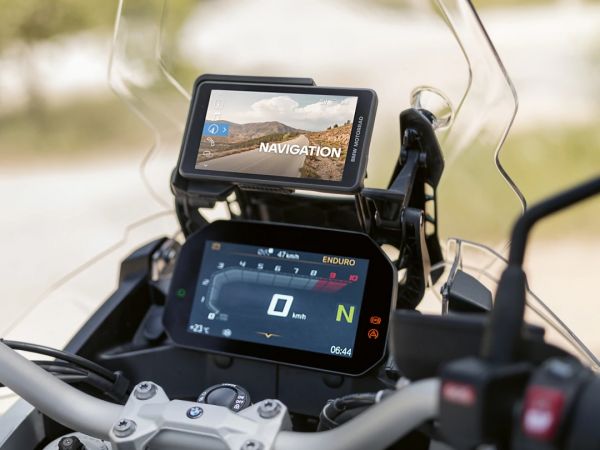
BMW Motorcycle ConnectedRide Navigator
The new BMW Motorcycle ConnectedRide Navigator ...

BMW-ConnectedRide Cradle and ConnectedApp
Riders of new BMW models have several options for using information and entertainment ...
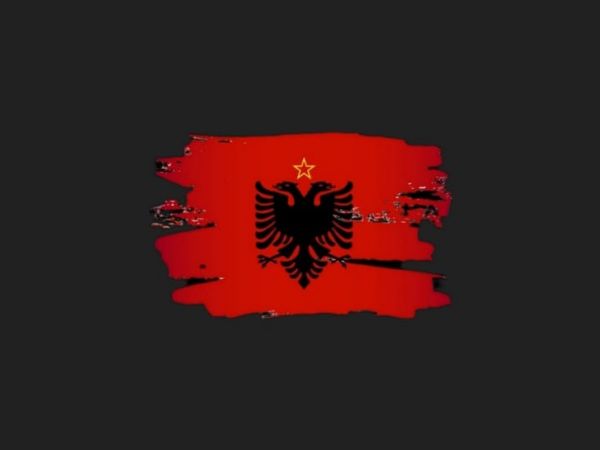
Traffic regulations in Europe - Albania
What should be considered on a motorcycle tour to or through Albania?
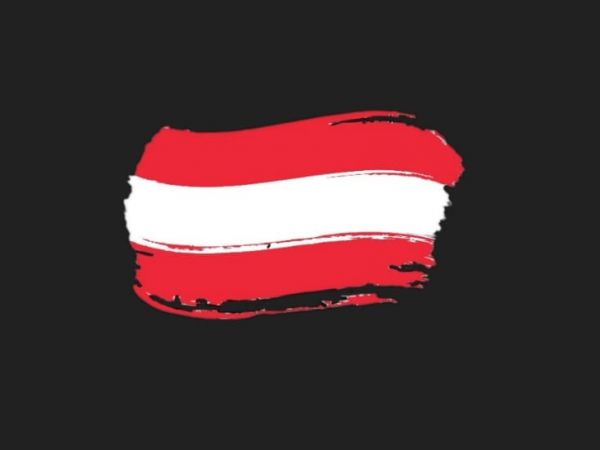
Traffic regulations in Europe - Austria
What should be considered on a motorcycle tour to or through Austria?
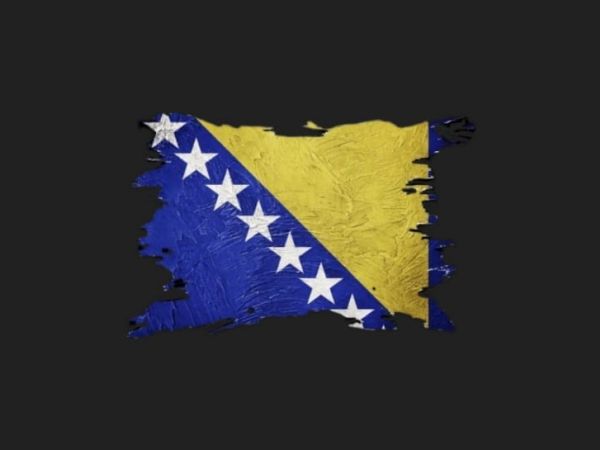
Traffic regulations in Europe - Bosnia Herzegovina
What should be considered on a motorcycle tour to or through Bosnia and Herzegovina?
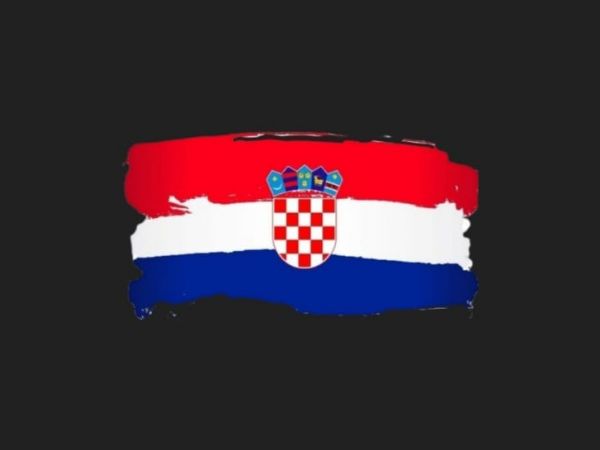
Traffic regulations in Europe - Croatia
What should be considered on a motorcycle tour to or through Croatia?
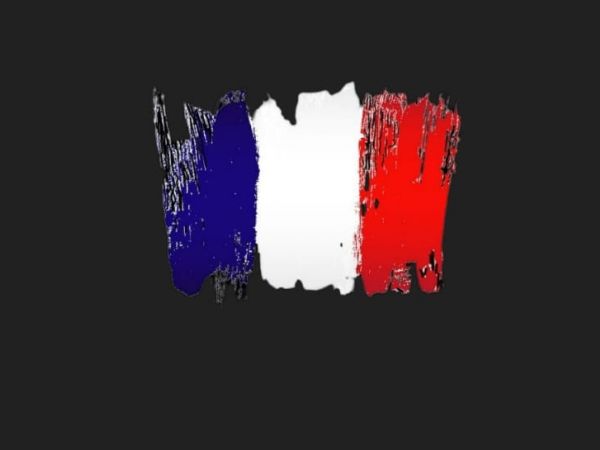
Traffic regulations in Europe - France
What should be considered on a motorcycle tour to or through France?
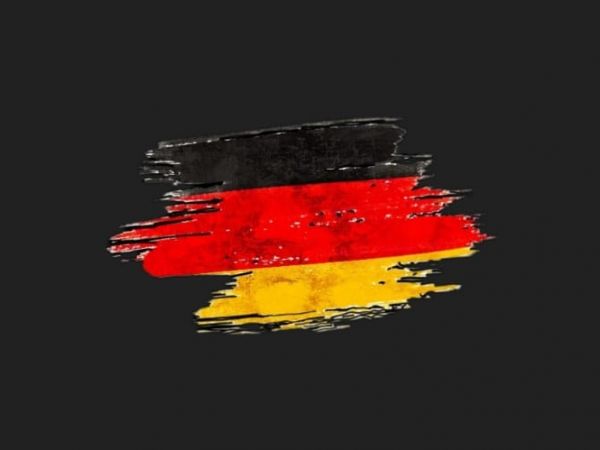
Traffic regulations in Europe - Germany
What should be considered on a motorcycle tour to or through Germany?
